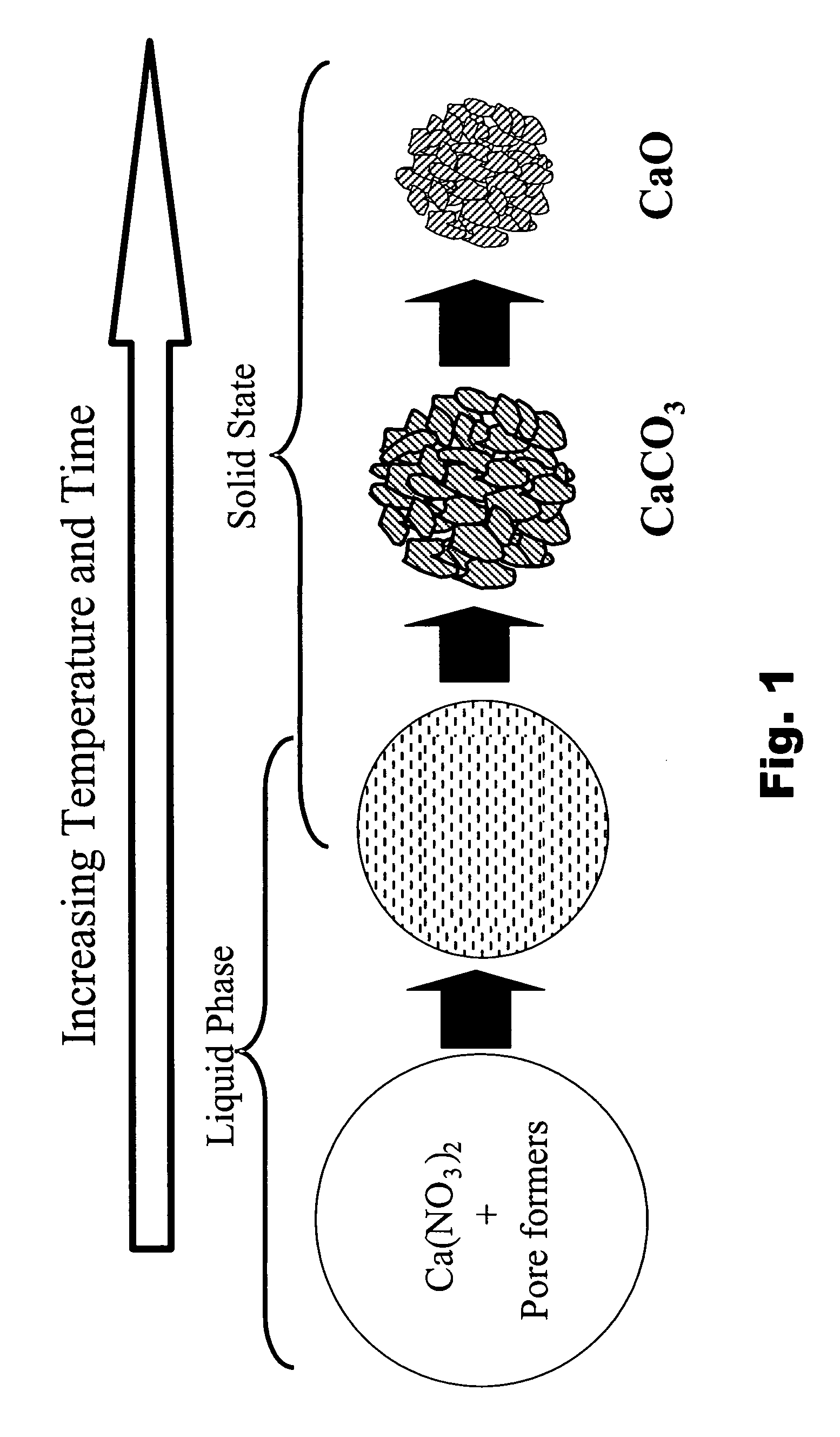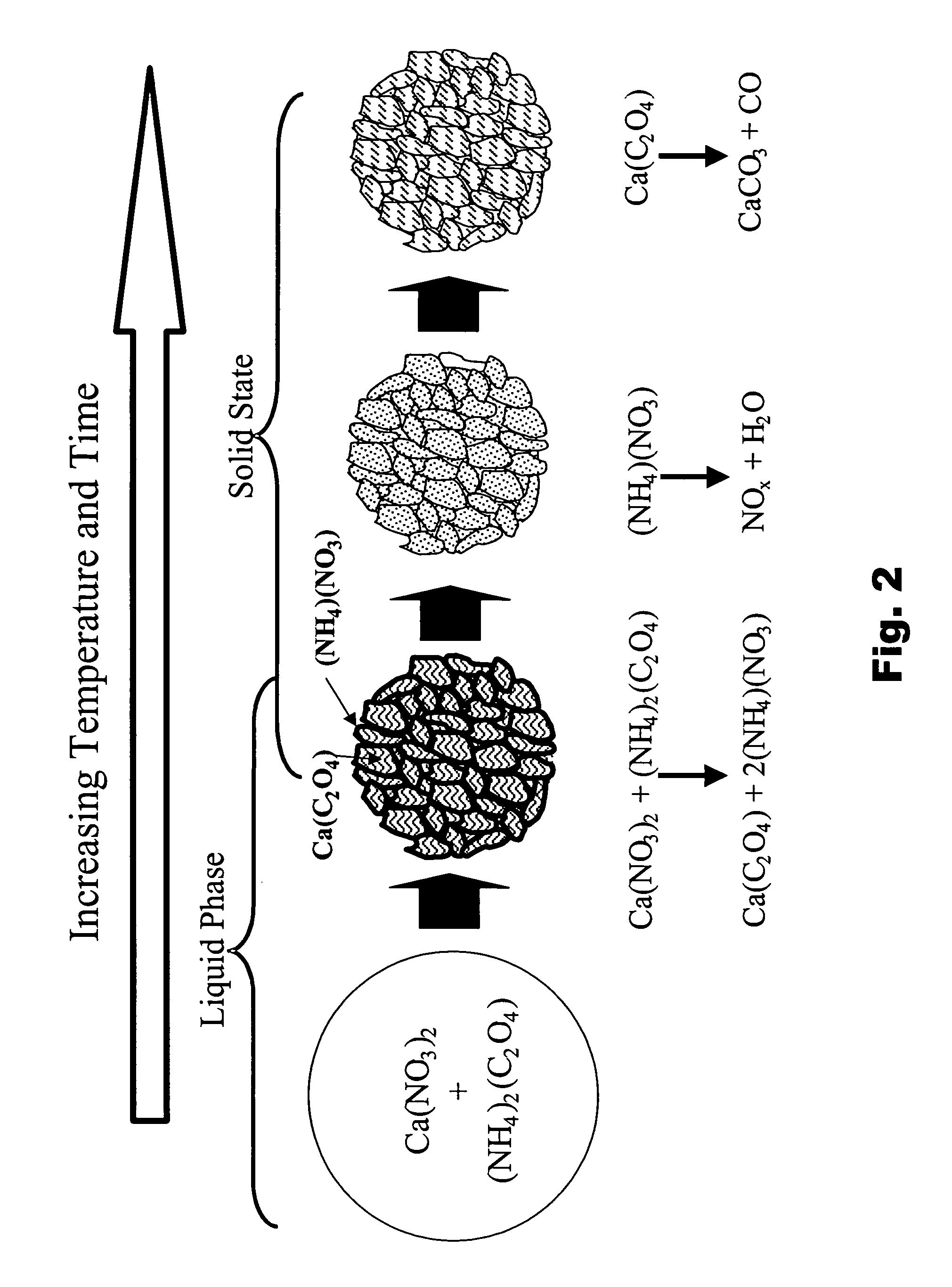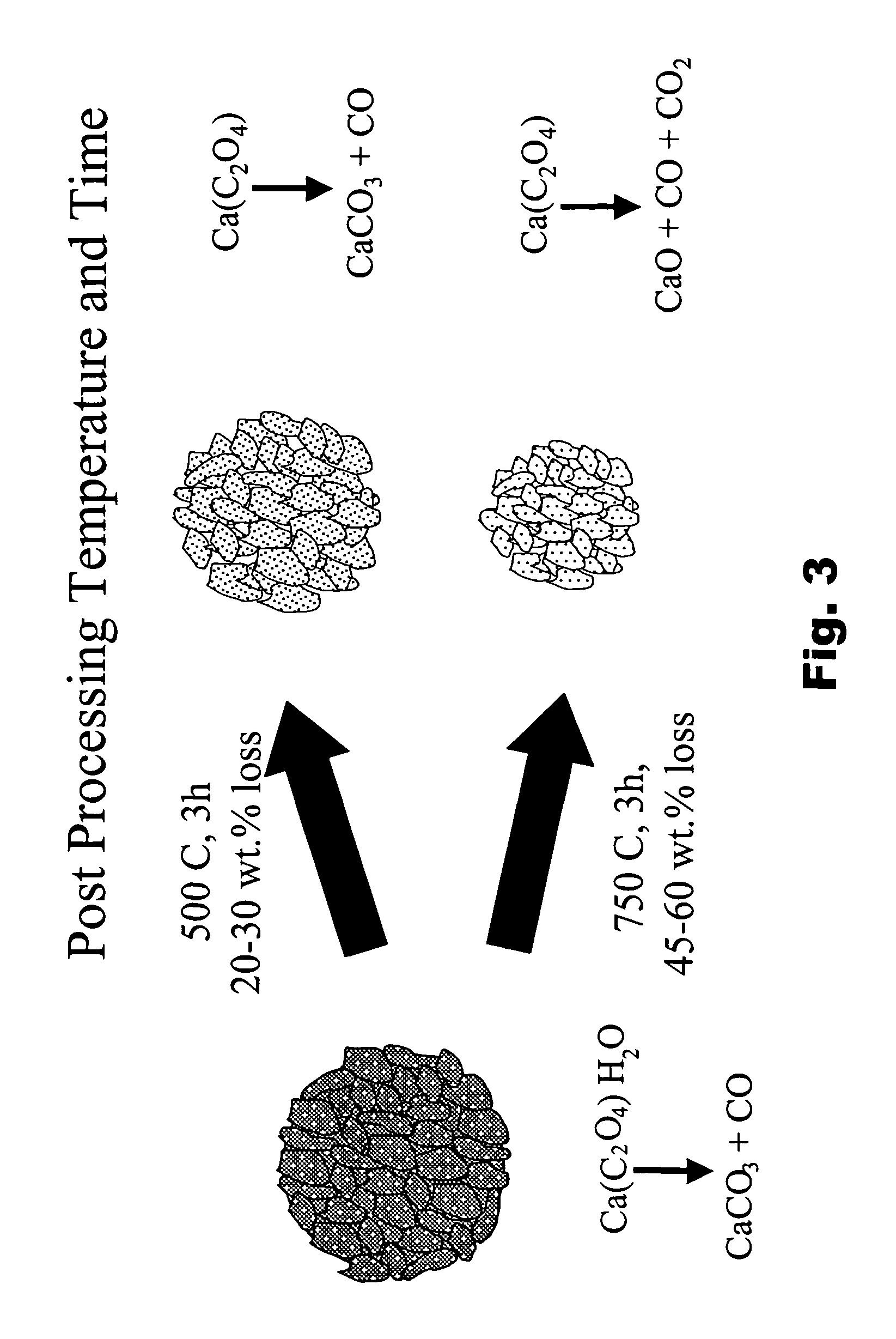Particulate absorbent materials
a technology of absorbent materials and particles, which is applied in the direction of hydrogen separation using solid contact, bulk chemical production, and other chemical processes, can solve the problems of reducing the overall efficiency of the power generation plant, few effective at such high temperatures, and affecting the effect of alkali metal hydroxide, etc., and achieves high absorption capacity, high space velocity, and beneficial heat transfer characteristics
- Summary
- Abstract
- Description
- Claims
- Application Information
AI Technical Summary
Benefits of technology
Problems solved by technology
Method used
Image
Examples
examples
[0305]The following examples illustrate the production and application of absorbent materials according to the present invention.
[0306]The absorbent materials according to the present invention can be fabricated by spray pyrolysis or spray drying, and either fabrication method can be followed by post-processing. The following specific examples illustrate some of these non-limiting embodiments.
[0307]Examples L-1 to L-4 illustrate the fabrication of lithium-based absorbent materials.
example l-1
[0308]This example illustrates the production of a 50 g batch of Li2O absorbent according to the present invention by spray pyrolysis. 114 g of Li-nitrate (LiNO3)2) is dissolved in 447 g of de-ionized water. 1 g of lactic acid and 1 g of NH4-nitrate (NH4NO3) is added while stirring and the solution is stirred for 10 minutes. Spray pyrolysis is conducted on an ultrasonic transducer system at a furnace temperature of 1100° C., with air as both the carrier gas and the quench gas at 60 SLPM and 5 SCFM, respectively. The reaction residence time of the system is 1.5 seconds, as calculated by the quotient of the system volume and the carrier gas flow rate corrected for temperature expansion. The collected powder batch consists essentially of Li2O
example l-2
[0309]This example illustrates the fabrication of a 500 g batch of 10% Al2O3 / Li2O according to the present invention in a spray dryer. 1.03 kg of Li-nitrate is dissolved in 5.8 kg of de-ionized water and 2.23 kg of NH4-oxalate ((NH4)2C2O4) is dissolved in 5.8 kg of de-ionized water. The two solutions are individually mixed on shear mixers for 30 minutes. The Li-nitrate solution is slowly added to the NH4-oxalate solution while shearing to precipitate Li2C2O4. The resulting 10 wt. % solids dispersion of precipitated Li2C2O4 is sheared for an additional hour. 0.25 kg of DISPAL 23N4-20 (a 20% boehmite alumina dispersion in water, available from Sasol, North America) is added, followed by 15 minutes of shear mixing. The precursor dispersion is fed into a mixed-flow spray dryer at a liquid feed rate to maintain inlet / outlet temperatures of 975° F. / 580° F., using a two-fluid nozzle with an air pressure of 65 psig. The residence time of the system is 10 seconds, as calculated above. The po...
PUM
| Property | Measurement | Unit |
|---|---|---|
| mass absorption capacity | aaaaa | aaaaa |
| mass absorption capacity | aaaaa | aaaaa |
| temperature | aaaaa | aaaaa |
Abstract
Description
Claims
Application Information
 Login to View More
Login to View More - Generate Ideas
- Intellectual Property
- Life Sciences
- Materials
- Tech Scout
- Unparalleled Data Quality
- Higher Quality Content
- 60% Fewer Hallucinations
Browse by: Latest US Patents, China's latest patents, Technical Efficacy Thesaurus, Application Domain, Technology Topic, Popular Technical Reports.
© 2025 PatSnap. All rights reserved.Legal|Privacy policy|Modern Slavery Act Transparency Statement|Sitemap|About US| Contact US: help@patsnap.com



